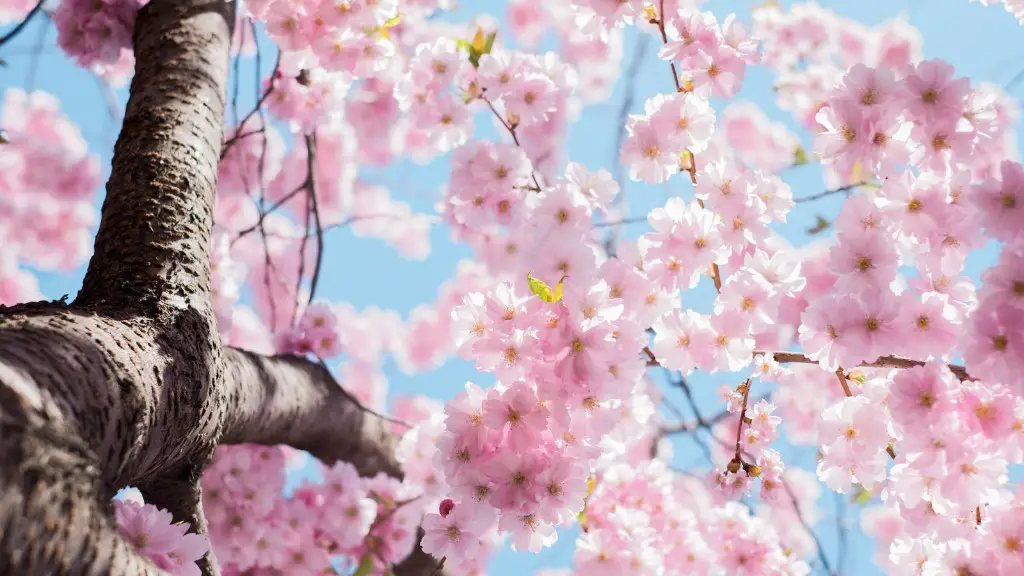Lemon guava is a fragrant and luscious tropical fruit that is a staple of many culinary dishes. Growing a lemon guava tree is not as difficult as many might think, although it does take some dedicated time as well as specific planting and maintenance techniques. With the right care, your lemon guava tree will soon become a highlight in your landscape and generous producer of sweet and tart fruit.
The best time to start planting your lemon guava tree is in the warm season when the temperature is at least 50 degrees or higher. You will want to find a spot that has access to 8 to 10 hours of direct sunlight a day, as this will encourage faster growth and a higher quality crop. Additionally, select a well-draining soil with a pH between 5.0–7.0, so that the tree can absorb crucial nutrients to boost its full potential.
Make sure to dig the soil where you will be transplanting the tree, loosening it up as much as possible. Carefully plant the tree in that spot, and make sure that the root system is spread out evenly. Firmly pack the dirt around the roots to ensure the tree is secure and won’t easily become uprooted. During the first month, water your lemon guava tree frequently during periods of drought.
Fertilizing your tree will help the lemon guava to be more fruitful. Try to methodically fertilize your tree weekly; this will offer the best results. Citrus trees love nitrogen and phosphorous fertilizer. Research which product blend is best for your particular region and soil type for optimum results. If there’s an abundance of water, mulch around the your lemon guava to help retain moisture, as this enhances the health and growth of the tree.
Since lemon guava trees bear fruit on the prior year’s growth, you can prune the branch tips annually to keep the tree at a height you prefer. Pruning helps the lemon guava tree to become more sustained and promotes a healthy root system. Cut back unneeded or unwanted shoots that are too close to your desired tree shape, but don’t get carried away because too much pruning can cause the tree to weaken over time.
These are a few tips to inspire you in your quest to grow a lemon guava tree. With a bit of love and care, your lemon guava will soon be a valuable addition to your landscape and bring you juicy, sun-ripened fruit for many years to come.
Fertilizing Lemon Guava
When it comes to fertilizing lemon guava, it is important to be aware of what type of fertilizer to use and when to use it. As mentioned earlier, lemon guava trees love nitrogen and phosphorous fertilizer. Additionally, you may want to consider adding potassium, which helps increase the size of the fruit, magnesium, which helps with leaf formation, and iron, which helps with the formation of chlorophyll. You should also try to apply fertilizer in smaller increments rather than all at one time; this will help the soil absorb the nutrients and help prevent burning the tree’s root system.
Weed Management for Lemon Guava
Unwanted weeds can steal the vital nutrients from your lemon guava. To prevent this from happening, you should patrol the tree’s area and hand-pull any weeds that may be lurking too close. You can additionally use a weed torch, which can help eliminate weeds that are hard to reach. Furthermore, applying a top layer of mulch can help deter weeds from coming into the area. And remember; if you control the weeds, you allow your Lemon Guava to thrive and produce a bountiful crop.
Disease and Pests of Lemon Guava
A common pest found on Lemon Guava trees is mealybugs, which is an aphid-like insect that feeds on different parts of the tree. To manage this, simply apply neem oil on the mealybugs. Spray the tree in the morning when the scent of the neem oil is not too strong; this should eradicate the mealybugs. Additionally, there are various fungal diseases that may attack your Lemon Guava tree. It is best to avoid getting the tree wet when it is cold and during overcast conditions. Additionally, make sure to prune any pests or dead leaves from the tree to help further prevent the spread of disease.
Irrigation for Lemon Guava
The most important factor to consider when it comes to watering lemon guava is to provide enough water, but not too much. You don’t want to water your tree every day, since this can cause the root system to rot and spread disease. Try to irrigate the tree every three to four days, and if you see that the leaves are starting to curl, then water the area deeply. Additionally, if your tree is in a container, be sure to water the soil until water is coming out of the bottom of the pot; this will ensure that the plant is getting the proper amount of moisture.
Harvesting Lemon Guava
You should be able to tell when your Lemon Guava is ripe and ready to harvest. As the fruits near maturity, they should turn from green to yellow. When this occurs, it is time to harvest the fruit. Carefully examine the fruit for any imperfections. Additionally, you may want to give the fruit a gentle press to test its ripeness; if you press the fruit and it gives a bit, the fruit is most likely ready for picking. Finally, use a pair of clippers to detach the fruits from the tree, and store them in a cool, dry place.


